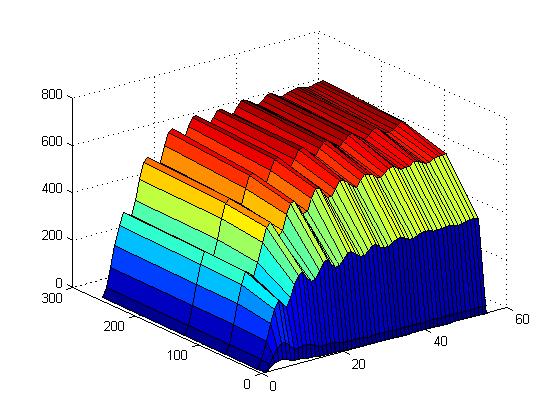Minnesota/27 July 2009
From 2009.igem.org
(New page: {|style="align:left" width="965" |- |''' Back to Notebook Home''' |- |'''Go to Previous Day (July 24)'''|| width=158|'''[[Minnesota/...) |
|||
| Line 5: | Line 5: | ||
|'''[[Minnesota/24 July 2009|Go to Previous Day (July 24)]]'''|| width=158|'''[[Minnesota/28 July 2009|Go to Next Day (July 28)]]''' | |'''[[Minnesota/24 July 2009|Go to Previous Day (July 24)]]'''|| width=158|'''[[Minnesota/28 July 2009|Go to Next Day (July 28)]]''' | ||
|} | |} | ||
| + | '''Patrick'''<br> | ||
| + | The results for the last three models submitted came back. The first is test6, which looked at how eliminating the ability for tetR2 to attach to aTc would affect the model. While horribly inaccurate, the hope was to simply confirm the model was working as expected. The base model is provided for comparison:<br> | ||
| + | |||
| + | <center><gallery widths=300 heights=200> | ||
| + | Image:base.jpg|Figure 1 - Base TTN Model | ||
| + | Image:test6.jpg|Figure 2 - Eliminating the Affect of aTc | ||
| + | </gallery></center><br> | ||
| + | |||
| + | This was somewhat surprising, but not unexplainable. Basically what is happening is that tetR2 is getting around and producing tetR2:aTc and tetR2:aTc2 by first producing tetR2:tetO1 complex. The then favorable reaction at high aTc concentrations it to almost immediately move to tetR2:tetO1:aTc2. This then decomposes to tetR2:aTc2 + tetO1. Thus tetR2 gets stuck as the tetR2:aTc2 complex as it did before. This method is not going to work in any practical manner to solve the problem.<br> | ||
| + | |||
| + | The next two models looked at truly eliminating the tetR2:aTc and tetR2:aTc2 complexes. Test7 does this simply by making tetR2:aTc2 go to tetR2 + 2 aTc, immediately upon formation. Test 8 does the same thing, but also increases the tetR2 decomposition:<br> | ||
| + | |||
| + | <center><gallery widths=300 heights=200> | ||
| + | Image:test7.jpg|Figure 3 - Eliminating tetR2:aTc and tetR2:aTc2 complexes | ||
| + | Image:test8.jpg|Figure 4 - Eliminating tetR2:aTc and tetR2:aTc2 complexes and Increasing tetR2 Decomposition | ||
| + | </gallery></center><br> | ||
| + | |||
| + | This has a more promising effect. It makes the difference between different aTc concentrations much more apparent. The experimental results somewhat support this idea. Both of these seem like it could work.<br> | ||
Latest revision as of 20:33, 30 July 2009
| Back to Notebook Home | |
| Go to Previous Day (July 24) | Go to Next Day (July 28) |
Patrick
The results for the last three models submitted came back. The first is test6, which looked at how eliminating the ability for tetR2 to attach to aTc would affect the model. While horribly inaccurate, the hope was to simply confirm the model was working as expected. The base model is provided for comparison:
This was somewhat surprising, but not unexplainable. Basically what is happening is that tetR2 is getting around and producing tetR2:aTc and tetR2:aTc2 by first producing tetR2:tetO1 complex. The then favorable reaction at high aTc concentrations it to almost immediately move to tetR2:tetO1:aTc2. This then decomposes to tetR2:aTc2 + tetO1. Thus tetR2 gets stuck as the tetR2:aTc2 complex as it did before. This method is not going to work in any practical manner to solve the problem.
The next two models looked at truly eliminating the tetR2:aTc and tetR2:aTc2 complexes. Test7 does this simply by making tetR2:aTc2 go to tetR2 + 2 aTc, immediately upon formation. Test 8 does the same thing, but also increases the tetR2 decomposition:
This has a more promising effect. It makes the difference between different aTc concentrations much more apparent. The experimental results somewhat support this idea. Both of these seem like it could work.
 "
"



